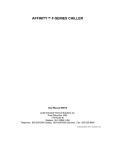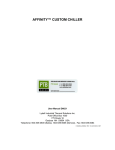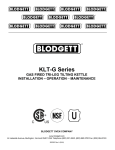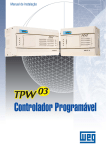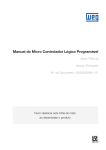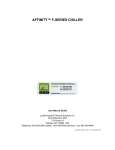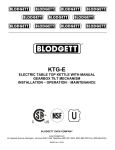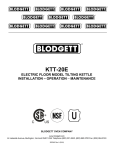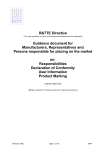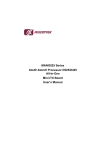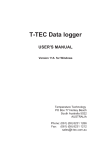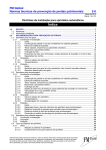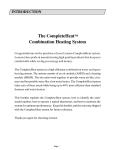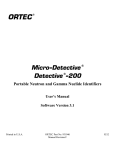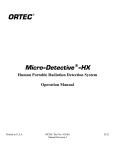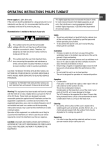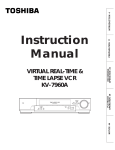Download Control/Monitoring - Artisan Technology Group
Transcript
Looking for more information? Visit us on the web at http://www.artisan-scientific.com for more information: • Price Quotations • Drivers· Technical Specifications. Manuals and Documentation Artisan Scientific is You~ Source for: Quality New and Certified-Used/Pre:-awned ECJuiflment • Fast Shipping and DelIve1y • Tens of Thousands of In-Stock Items • Equipment Demos • Hundreds of Manufacturers Supported • Leasing / Monthly Rentals Service Center Repairs Experienced Engineers and Technicians on staff in our State-of-the-art Full-Service In-House Service Center Facility • Consignment InstraView Remote Inspection Remotely inspect equipment before purchasing with our Innovative InstraView-website at http://www.instraview.com We bUy used equipment! We also offer credit for Buy-Backs and Trade-Ins Sell your excess. underutilized. and idle used equipment. Contact one of our Customer Service Representatives todayl Talk to a live person: 88EM38-S0URCE fB88-887-68721 I Contact us by email: [email protected] I Visit our website: http://www.artisan-scientific.com AFFINITY™ P-SERIES CHILLER User Manual D50050 Lydall Industrial Thermal Solutions Inc. 775 Route 16 Ossipee NH 03864 USA Telephone: 603-539-3600 (Sales), 603-539-5005 (Service), Fax: 603-539-8484 Artisan Scientific - Quality Instrumentation ... Guaranteed | (888) 88-SOURCE | www.artisan-scientific.com Table of Contents Introduction Equipment Precautions Safety Precautions Installation Placement Electrical Connection Priming the Pump and Connecting the Coolant Loop Control/Monitoring Control Panel PYX4 Microprocessor Changing the Process Temperature Setpoint Fault Display PYX Controller Parameter Values WinChill Communications PXZ Controller Status Lights EMO Operation Operating Range Start-up Shutdown Preventive Maintenance PLC Tables Trouble Shooting Guide Warranty Refrigeration Diagram Coolant Flow Diagram Electrical Schematic Artisan Scientific - Quality Instrumentation ... Guaranteed | (888) 88-SOURCE | www.artisan-scientific.com Introduction Congratulations on your purchase of an Affinity™ product. We want to personally welcome you to the Lydall larger family. In October of 2001, Lydall purchased Affinity Industries, in an effort to expand capability as a Total Thermal Solutions Provider. Affinity’s chillers and heat exchangers complement Lydall’s existing wide array of Passive Thermal Solutions, augmenting Lydall’s engineered thermal solutions for use in appliance, cryogenic, building products, and automotive markets. Our group is market driven as a formidable thermal solution manufacturer. Lydall, Inc. is a New York Stock Exchange listed company (NYSE: LDL) headquartered in Manchester, CT. Our company, with ten operations in the United States, France, one in Germany, and Sales/Service Offices in Japan and Singapore, is recognized for working with customers to satisfy their unique thermal solution needs, and for delivering high quality, innovative products, and exceptional service. Affinity™ products are high-precision specialty temperature-controlled equipment. The following product manual is designed to help you realize the full value of your purchase. We highly recommend that you read this manual in its entirety. The manual will assist your company with the installation, operation, and routine maintenance of your Affinity™ product. Please keep this manual readily accessible to operation and service personnel to ensure you get the most out of our product. If you have any questions about this model, or have other thermal solution needs, do not hesitate to call our Sales department (603-539-3600) or the 24/7 Service department (603-539-5005). Thank you for your confidence in our ability to meet and/or exceed your needs and expectations. Artisan Scientific - Quality Instrumentation ... Guaranteed | (888) 88-SOURCE | www.artisan-scientific.com CE Declaration of Conformity Lydall Industrial Thermal Solutions declares that the Lydall product referred to in this manual is in conformity with the provisions of: Council Directive 2004/108/EC (Electromagnetic Compatibility Directive) European Standards: EN55011, Group 1, Class A EN61326, Industrial Requirements and Council Directive 2006/95/EC (Low Voltage Directive) European Standard: EN60204-1 A signed declaration of conformity is available from Lydall upon request. European Directive 97/23/EC As of May 29, 2002, the European pressure equipment directive (PED) 97/23/EC became mandatory for the CE marking of some pressure equipment. Lydall chillers and condensing units are not CE marked to the PED. Most Lydall chillers fall into the Category I or the Sound Engineering Practice categories as defined by the PED and since chillers fall under the Low Voltage Directive (2006/95/EC), they are excluded from the scope of the PED per Article 1, paragraph 3.6 of the PED. Some chillers and condensing units using hermetic compressors of 7.5 HP or more that are classified as Category II are not excluded from the PED. In these cases, it is the responsibility of the end-user to assure that the final installation complies with all of the appropriate European directives including the PED. For more information regarding the PED and other European directives, go to http://www.newapproach.org/ Artisan Scientific - Quality Instrumentation ... Guaranteed | (888) 88-SOURCE | www.artisan-scientific.com Equipment Precautions Failure to adhere to these precautions will void the warranty and may damage the chiller. 1. This chiller has been shipped without coolant. Do not run the unit without the fluid lines connected and filled with the proper fluid. Never run the pump dry because it will be quickly damaged without liquid. 2. This unit is designed to use HFE-7500 as the coolant. It was tested at the factory with HFE7500. Consult Lydall prior to using any other fluid. Other coolants may not be compatible with the components in the unit’s coolant loop. 3. Maximum storage temperature for the unit is 52EC (125EF). 4. The chiller is designed for indoor use only. Do not operate the chiller in ambient temperatures below 7EC (45EF) or above 30EC (86EF). Operation above 30EC will derate the chiller’s cooling capacity. If the chiller has been exposed to temperatures below 7EC, allow twenty-four hours at ambient temperature above 7EC to warm the oil in the compressor as well as the refrigerant before starting. 5. If this unit contains refrigerant, there is an oxygen depletion risk that should be considered. It must be placed in a room with adequate volume based on the amount of refrigerant in the unit. If additional refrigeration equipment is in the room, additional space must be provided. In the Placement section, under Installation, refer to the Warning: Oxygen Depletion Risk for more details. 6. The cabinet of the chiller is designed to vent air. Maintain free space for flow of air on the condenser side of the chiller. The two sides or the top must have an equal amount of free space. 7. Regularly check the air filter located in front of the compressor. Remove the filter, clean as needed and reinstall or replace. When air flow becomes impeded, cooling capacity decreases and electrical efficiency drops as motor load increases. 8. This chiller operates on three phase electricity. Some components are sensitive to phase sequence. The chiller is designed and wired so that all components will operate properly if the phase sequence is correct. This unit is protected by a Phase Reverse Relay, to prevent it from running if the sequence is incorrect. If the chiller fails to start on installation, reverse the phase sequence external to the chiller. Do not modify the wiring inside the electrical box. 9. Routinely inspect the pump inlet strainer located in the reservoir for buildup of debris. Turn the chiller off, then remove and clean the strainer as required to permit free flow of coolant. Prevent foreign debris from entering coolant lines while the strainer is removed. Hint: A plastic sandwich bag may be used to wrap the strainer to contain most of the debris. Failure to keep the strainer clean will reduce coolant flow and may damage the pump. Artisan Scientific - Quality Instrumentation ... Guaranteed | (888) 88-SOURCE | www.artisan-scientific.com Equipment Precautions 10. Do not operate the chiller at coolant temperatures above or below the values it was specified to deliver. 11. Do not operate the chiller with cooling loads that exceed its factory rated cooling capacity. 12. Do not operate damaged or leaking equipment. 13. The chiller must not be transported unless suitably protected. Original factory packaging in good condition or equivalent is required. Request air-ride trucks if transporting over land. 14. The chiller should be thoroughly drained and the coolant lines should be dry before shipping or storing. 15. Modifying the chiller without express written consent from Lydall will void the warranty. 16. Tools required to perform inspection and maintenance on this unit are: screwdriver multimeter (including AC voltmeter) safety glasses gloves 17. Training requirement: All information contained in this manual must be read, understood, and followed before operating or performing maintenance on this chiller. Artisan Scientific - Quality Instrumentation ... Guaranteed | (888) 88-SOURCE | www.artisan-scientific.com Safety Precautions 1. Heed all warning labels. No warning label should ever be removed from the unit. 2. Connect the chiller to a properly fused disconnect box in compliance with the National Electric Code (NFPA-70) as well as state and local codes for American usage, or national and local codes for European usage. Maximum fuses must not exceed the maximum rating found on the serial tag on the electrical box. To reduce the risk of electric shock: ! Disconnect electric power before opening the electrical box of the unit. ! Do not operate with electrical box door open. ! Refer servicing of electrical box components to qualified/certified personnel. ! Do not operate equipment with damaged electrical power cords. ! Turn off the unit and disconnect electrical power before servicing or moving. ! Properly ground the unit. 3. The servicing of the refrigeration system or components should be performed only by properly certified refrigeration technicians. 4. Coolant lines, filters, and other components which connect to the unit must be capable of withstanding the maximum pressure that the pump in the chiller can deliver at the maximum expected temperature. 5. Do not remove any warning labels. 6. When operating a pump with a magnetic coupling, pay special attention to the handling of permanent magnetic parts. Due to potential interference from magnets, keep a safe distance from pace makers and other devices subject to magnetic interference. 7. Fluids can be extremely hot or cold. Use appropriate precautions when contact with fluids is possible. Artisan Scientific - Quality Instrumentation ... Guaranteed | (888) 88-SOURCE | www.artisan-scientific.com Installation Transporting If a forklift will be used to carry the chiller, proceed slowly and carefully to avoid jarring the unit. If the chiller will be shipped, protect it from shock and vibration or the warranty will be void. The chiller must not be transported unless suitably protected. Original factory packaging in good condition or equivalent is required. Request air-ride trucks when transporting over land. Thoroughly drain the coolant lines and blow them dry with low pressure compressed air before shipping or storing. Lydall will not accept any unit containing measurable amounts of fluid. Fluid left in the unit during shipping may damage components within the unit. Such damage is not covered by warranty. Placement Select a level location, near the application, free from dripping or spraying moisture and excessive dust. Keeping coolant lines short allows the pump to provide maximum pressure and flow to the application. If the chiller will be placed more than 25 feet from the application, call Lydall to discuss placement and how it might affect performance.\ WARNING: Oxygen Depletion Risk In the event of a refrigerant leak, refrigerant gas may displace oxygen that could result in suffocation and death. Never place the chiller in a room that is smaller than the minimum room volume requirement as defined below. If the room is ventilated, the air distribution system must be analyzed to determine the worst case distribution of leaked refrigerant. A leak detector alarm device is always required in a ventilated room that does not meet the minimum room volume given below. Assure adequate and sufficient room volume and ventilation before placing a chiller that contains refrigerant in a room. Contact Lydall at 1-603-539-5005 if you have any concerns or questions. Pounds of refrigerant charge can be read directly from the nameplate on your chiller. Remember to include in your calculation any refrigerant that may be stored in any other containers. Minimum Room Volume = Pounds of refrigerant x 110 cubic feet Example: Two chillers are placed in a room, each containing 6 pounds of refrigerant. The minimum room volume shall be 12 x 110 cubic feet, or 1,320 cubic feet. Installation Artisan Scientific - Quality Instrumentation ... Guaranteed | (888) 88-SOURCE | www.artisan-scientific.com Electrical Requirements Connect the chiller to a properly fused disconnect box in compliance with the National Electric Code (NFPA-70) as well as state and local codes for American usage, or national and local codes for European usage. Maximum fuse sizes in the disconnect box must not exceed the maximum ratings specified on the serial tag of the chiller (found on the electrical box). The voltage, phase, and frequency of the power source must also match the requirements specified on the serial tag. Note: Affinity™ models that can operate at either 200-220 Volts 50 Hertz or 208-230 Volts 60 Hertz have been set at the factory for 200-220 volt operation. If the operating voltage will be greater than 220 volts, a qualified electrician should remove the red wire from the contactor and replace it with the orange wire taken from the dummy fuse block. Attach the red wire to the dummy fuse block as shown in the diagram above. See the unit’s serial tag for the correct voltage range. Warning: To reduce the risk of electric shock, do NOT remove cover from the electrical box. It contains exposed high voltage wires. Refer servicing to qualified personnel. Disconnect power to the chiller before performing any service. TYPICAL CONFIGURATION ELECTRICAL SCHEMATIC CONNECT FOR SYSTEM VOLTAGE CT1 75VA INTERCHANGE RED AND ORN TO CHANGE VOLTAGE REMOVED FROM POWER TERMINAL PRIMARY CONNECTIONS NOT USED MUST BE ISOLATED AND CAPPED NOTE: IN SOME CASES PRESSURE SCREW TERMINAL BLOCKS ARE USED IN PLACE OF FASTON TERMINATIONS 24 VAC BLU YEL Artisan Scientific - Quality Instrumentation ... Guaranteed | (888) 88-SOURCE | www.artisan-scientific.com Installation Priming the Pump and Connecting the Coolant Loop DO NOT RUN THE PUMP DRY. If the pump does not establish prime, the pump shaft seal may overheat and be damaged in less than a minute. Use the following instructions when filling and assembling the coolant lines to prevent damage to the pump shaft seal. 1. Close the reservoir drain. 2. Fully open the flow control valve (if included). 3. Have extra HFE7500 to add as the pump primes and the coolant loop fills. 4. Fill the reservoir with HFE 7500. Do not fill above the height of the coolant loop connection fittings or fluid may leak out. 5. Connect the coolant lines from the application to the FPT (female pipe thread) fittings near the top of the chiller as follows. Do not over tighten the insert and do not use a sealant that will lock the male threads to the female threads. a. Connect the coolant line coming back from the application to the RETURN fitting. b. Connect the coolant line going to the application to the SUPPLY fitting. RETURN 6. SUPPLY This chiller is equipped with a Phase Reverse Relay. The chiller will not start if the phase sequence is incorrect. If the chiller fails to start upon installation, have a qualified electrical technician check the Phase Reverse Relay in the electrical box of the chiller. If the LED is not brightly lit, the phase sequence is incorrect. The electrical technician should switch any two of the wires at the incoming power source. Do not change any of the wiring in the chiller’s electrical box. Check again for proper phase sequence before proceeding with these instructions. Artisan Scientific - Quality Instrumentation ... Guaranteed | (888) 88-SOURCE | www.artisan-scientific.com Installation 7. When the previous steps are complete, turn the chiller on by placing the ON/OFF/SET switch in the ON position. Immediately check for flow. If within five seconds no turbulence is visible in the reservoir or the supply pressure gauge shows no pressure reading, shut the chiller off by placing the ON/OFF/SET switch in the OFF position. If flow is established, continue filling until fluid rises to within a few inches of the top of the reservoir. Do not allow the reservoir to overflow. 8. If the pump does not establish prime, disconnect the SUPPLY coolant line to vent any trapped air, reconnect the line, and repeat step 7. 9. If the pump still does not prime, use the following steps: a. Disconnect both coolant lines (have a container handy to catch any overflow from the RETURN fitting). b. Force coolant into the SUPPLY fitting. The fluid will force the air out of the lines in the chiller and out of the pump head, causing it to escape into the reservoir. Elevate the coolant a few feet above the chiller, connect to the SUPPLY fitting, and let gravity force the air out into the reservoir. Remember to have a container handy to catch any overflow from the RETURN fitting. c. Reconnect the coolant lines and repeat step 7. Stop filling when the reservoir is full to within a few inches of the top. Do not allow the reservoir to overflow. A stainless steel mesh strainer attaches to the pump suction port near the bottom of the reservoir. It can easily be removed for cleaning. First turn the pump off, then pull off the strainer, rinse it clean, and push it back on. To protect the pump, routinely inspect the strainer to be sure it is clean and properly attached. Hint: If the strainer is coated with debris, wrap it with a plastic sandwich bag before pulling it off to prevent most of the debris from escaping into the reservoir. Failure to clean a clogged strainer can restrict flow, causing the FAULT light to illuminate. Turn the chiller off for a few seconds after correcting the condition to reset the alarm. Artisan Scientific - Quality Instrumentation ... Guaranteed | (888) 88-SOURCE | www.artisan-scientific.com Control/Monitoring Control Panel The various elements on the control panel are described in the sections below. Advanced WinChill Communications are available through the 9-pin connector. To run the unit without the software running, set the Station Number (Stno on the controller parameters, see Parameter Values) to 15. Turn the unit off, set the ON/OFF/SET switch to the ON position, cycle the breaker and in approximately 10 seconds, the unit will start. PYX4 Microprocessor The microprocessor (Figure 1) becomes operative when the breaker is closed and five seconds after the SET/OFF/ON switch is placed in either the ON or SET position. EC FUJI ELECTRIC OUT1 PV 8. 8. 8. 8. OUT2 ALM1 SV SEL :::: 8. 8. 8. 8. ALM2 :::: :::: Figure 1 The microprocessor receives a temperature signal from the RTD (Resistance Temperature Detector) located in the process cooling line leaving the evaporator. This temperature value is displayed in the PV (Process Value) readout on the controller. The SV (Setpoint Value) readout has two distinct functions. ! To establish the basic program of the microprocessor. ! To set the control temperature of the fluid out of the evaporator. Changing the Process Temperature Setpoint Change the Setpoint Value by pressing the (>) key on the controller keypad. SV will change to a leading zero display. Continue pressing (>) until the appropriate digit flashes. Press (v) to increase the value or press (w) to decrease the value. Continue pressing (>) until the last digit flashes. Press (>) one more time and all leading zeroes extinguish. This locks in the Setpoint Value. Caution: Never program in a Setpoint Value of less than -45EC. Artisan Scientific - Quality Instrumentation ... Guaranteed | (888) 88-SOURCE | www.artisan-scientific.com Control/Monitoring To power the controller without powering the chiller, place the SET/OFF/ON switch in the SET position. The digital display will light in about 5 seconds. The number next to PV is the actual process fluid temperature. The number next to SV is the Setpoint Value (desired) temperature. To view the program depress the SEL key until LoCT appears in the PV section of the controller and 0002 appears in the SV section. Change 0002 to 0003. Continuing to depress the (w) key will bring up the remainder of the program. Toggle through the program using the (>), (v), and (w) keys to change the appropriate digits until the display reads as desired. To change a parameter value, press (>). The value in PV will begin flashing. While flashing, the value may be changed by pressing (v) to increase the value or by pressing (w) to decrease the value. When the correct value is visible on the display, press SEL to lock in the value. Return to the PV/SV displays will be automatic after a minute, or by pressing and holding the SEL key for a few seconds. Fault Display If UUUU appears on the PV display, one of the following has occurred: ! RTD burnout. ! RTD disconnected. ! Input is more than 5% of the full range above the high limit (Sv-h, see below in program listing). If LLLL appears on the PV display, one of the following has occurred: ! RTD short circuit. ! RTD disconnected. ! Input is more than 5% of the full range below the low limit (Sv-L, see below in program listing). PYX Parameter Values Press and hold the SEL key to get to the PYX controller parameter menu. Use arrow buttons to change values. Display returns to PV/SV after about one minute if parameters are not being changed. Set the following values: LoCt 3 oUT1 ? Mod AUTo All parameters user changeable Cannot be set - anything but 0.0 indicates control output #1 is energized Mode - Auto or Manual Artisan Scientific - Quality Instrumentation ... Guaranteed | (888) 88-SOURCE | www.artisan-scientific.com Control/Monitoring AT P i d Ar Man oFF 9.0 10 0.0 15.0 (EC), 27.0 (EF) 65.0 Normal control - not auto-tuned Proportional band Integral time Derivative time Anti-reset windup - limits integral range to control overshoot Manual resetting value (eliminates offset from P-only control) AL1T 0021 Alarm 1 type - high & low absolute AL11 81.0 (EC),or 174.0 (EF) Alarm 1 setpoint 1 (high) A11h 1.0(C or F) Alarm 1 hysteresis 1 AL12 -41.0 (EC), or -42.0 (EF) Alarm 1 setpoint 2 (low) A12h 1.0 (EC or F) Alarm 1 hysteresis 2 AL2T 0041 Alarm 2 type - high absolute and low deviation - used to operate heater AL21 28.0 (EC), 100.0 (EF) Alarm 2 setpoint 1 - energizes heater when PV is above this temp A21h 1.5 (EC), 3.0 (EF) Alarm 2 hysteresis AL22 5.0 (EC), 9.0 (EF) Alarm 2 setpoint 2 - heater is on when PV >AL22 below SV A22h 1.0 (EC), 2.0 (EF) Alarm 2 hysteresis 2 Loop 0.0 Loop break detection time (alarms on abnormal input) PvT 0500 (EC) 100 Ohm RTD, -100 to 200EC, 1 degree resolution 0501 (EF) 100 Ohm RTD, -148 to 392EF, degree resolution TF 5.0 Input Filter time in seconds SFT 0 Process Variable shift Sv-h 80.0 (EC), 176 (EF) Setpoint Variable high limit Sv-L -40.0 (EC or F) Setpoint Variable low limit CTrL FUZY Control type dT 0.5 Not supported - always 0.5 rEv1 rEv Control output #1 action - reverse for modulating HGV Mv-h 100.0 Manipulated variable (control output) high limit in percent Mv-L 0.0 Manipulated variable (control output) low limit in percent bUrn 1 Output value when input is abnormal (set to -3% when bUrn = 1) Stno 1 Station number for RS-485 communications (may not be used in all cases) Go through the parameters twice, then set LoCt to 2, some parameters user changeable WinChill Communications For units with WinChill RS232 Communications to meet CE Compliance, the external RS232 cable which connects the unit to the customer’s equipment must be shielded. This is required to meet the EMC immunity requirements of EN61326 for industrial locations. The cable must not exceed 30 feet in length. The shield construction must be a braid (minimum 85% tinned copper) over aluminum foil (minimum 100% coverage) shield with a 360E shield termination at each end of the cable. One possible source for cable meeting this requirement is Black Box, part number EGM12D. Artisan Scientific - Quality Instrumentation ... Guaranteed | (888) 88-SOURCE | www.artisan-scientific.com Control/Monitoring For units with WinChill RS485 communications, the cable must not exceed one thousand feet in length. PXZ Controller A second controller (Figure 2), located inside the electrical box, is for heater safety. It has been programmed at the factory and should not be changed. The following values are provided for information purposes only. Figure 2 To check the program: 1. Press and hold the SEL key until the P-n1 menu appears (3-5 secs.) 2. Toggle through the P-n1 menu until dSP1 appears. 3. Program the following values: dSP1 65 dSP2 dSP3 dSP4 dSP5 dSP6 dSP7 255 251 255 3 186 127 Parameter masking - used to hide the display of unused parameters Artisan Scientific - Quality Instrumentation ... Guaranteed | (888) 88-SOURCE | www.artisan-scientific.com Control/Monitoring 4. Push the PV/SV key, then the SEL key. P-n2 will appear. Set the following: F. C. P-n1 2 Direct acting, fails to zero output P-n2 2 Input type - Type J thermocouple P-dF 3.0 Input filter constant in seconds P-SL -40 -40 Lower limit of setpoint range P-SU 320 160 Upper limit of setpoint range P-AL 12 High and low zone alarm P-AH 0 P-dP 0 Number of digits to the right of the decimal point P-F F. C. 5. Push and hold the Sel key for 3-5 seconds, until P appears. Program as follows: P 0.0 i 0 d 0.0 AL 32 0 Heater is off below this temp AH 302 150 Heater is off above this temp HYS 0.0 6. Push and hold the SEL key for 3-5 seconds. Toggle to dSP1. Set: the following: dSP1 207 dSP5 135 7. Press the PV/SV key until SV shows. Set SV to 320EF or 160EC. 8. Push and hold the SEL key for 3-5 seconds, until AH appears. Set: LOC to 1, all parameters locked. Artisan Scientific - Quality Instrumentation ... Guaranteed | (888) 88-SOURCE | www.artisan-scientific.com Control/Monitoring Status Lights EC FUJI ELECTRIC OUT1 PV 8. 8. 8. 8. OUT2 ALM1 SV SEL :::: 8. 8. 8. 8. ALM2 :::: :::: Figure 3 The various lights are described below. Note that a fault light indicates unit shutdown. LEVEL - Amber Located on the lower left side of the controller. Flashing when a high level warning condition exists in the reservoir. Remove excess fluid. Solid when a low level alarm condition exists. More fluid should be added immediately. Artisan Scientific - Quality Instrumentation ... Guaranteed | (888) 88-SOURCE | www.artisan-scientific.com Control/Monitoring HIGH (REFRIGERANT) PRESSURE - Red Located on the upper left side of the controller. Flashing when a high compressor discharge pressure condition exists (warning). If pressure continues to increase and exceeds the setpoint, the light will become solid (alarm) and the unit will shut down. REFRIGERANT - Red Located on the upper right side of the controller. Flashing when a low refrigerant level is sensed in the receiver. The light will become solid when the unit shuts down on low suction pressure (after the time delay). COMPRESSOR OVERLOAD (FAULT) - Red Located on the lower right side of the controller. 3 flash sequence. Activated after a 2 second time delay by the current sensor in one of the leads to the compressor motor when the motor has been shut down due to excessive temperature. PUMP OVERLOAD (FAULT) - Red Located on the lower right side of the controller. 2 flash sequence. Activated when the pump amperage exceeds the overload setting. PUMP LOW FLOW (FAULT) - Red Located on the lower right side of the controller. Single flash. Activated when the pump flow falls below setpoint to warn the operator of an impending low flow condition. PHASE REVERSAL (FAULT) - Red Located on the lower right side of the controller. Solid light. Activated when phases of the unit need to be reversed. This may happen on initial start up of the unit. If it occurs, switch phases external to the unit and power the unit again. To restart the unit after any fault occurs, the power must be cycled. To cycle the power, place the ON/OFF/SET switch in the OFF position and open the main circuit breaker for a few seconds. When power is reapplied and the ON/OFF/SET switch is placed in the ON position, the unit should restart. Artisan Scientific - Quality Instrumentation ... Guaranteed | (888) 88-SOURCE | www.artisan-scientific.com Control/Monitoring Emergency Stop The momentary EMO has two sets of normally closed contacts. Both contacts must be closed to energize the master control relay coil. Continuity between pins 1 and 2 of the 4 pin Amp connector external to the unit must also be present. To start the unit, ensure that the EMO is not depressed, then momentarily press the red POWER ON button located on the control panel below the EMO. The customer’s EMO, when connected to pins 1 and 2 of the 4 pin Amp connector, will provide the same functionality. The customer can use pins 3 and 4 of the 4 pin Amp connector to allow the unit’s EMO to turn off other equipment when properly connected. Artisan Scientific - Quality Instrumentation ... Guaranteed | (888) 88-SOURCE | www.artisan-scientific.com Operation Operating Range This unit has been designed to operate within the temperature range of -40EC to +80EC and should not be operated outside of this range. HFE 7500 must be used as a process fluid in this unit. Start-Up Before Start-Up, perform electrical and fluid connections as directed in the Installation section of this manual. 1. Inspect the unit inside and out to be sure that there is no fluid, oil or refrigerant leaks. 2. Do not attempt to operate the unit unless the system appears secure and dry. 3. All cable connections must be in place and secure. 4. Ensure that the proper power (voltage, breaker, and phase) is applied. 5. Turn the SET/OFF/ON switch on the local panel to the OFF position. 6. Fill the reservoir with HFE 7500. 7. Close the Main Breaker. Turn the SET/OFF/ON switch to the SET position. 8. No warning or alarm lights should be lit. 9. Jog the pump by placing the SET/OFF/ON switch in the ON position for 2-3 seconds. This step will need to be repeated seven or eight times. If there is difficulty priming the pump, call Lydall service at (603) 539-5005 for assistance. 10. Once the pump is primed, the pressure relief cap on the reservoir must be tightened and the sanitary reservoir cap secured. 11. Turn the SET/OFF/ON switch to the SET position. 12. Set the Set-Value (SV) to a value higher than the Process-Value (PV) to open the modulating valve. 13. Put the SET/OFF/ON switch in the ON position. The unit should begin operation. To run the unit without the software running, set the Station Number (Stno on the PYX Controller Parameters, in the Control/Monitoring section of this manual) to 15. Turn the unit off, set the ON/OFF/SET switch to the ON position, cycle the breaker and in approximately 10 seconds, the unit will start. Artisan Scientific - Quality Instrumentation ... Guaranteed | (888) 88-SOURCE | www.artisan-scientific.com Operation Shutdown Place the SET/OFF/ON switch and the Main Power breaker to OFF. If the unit will be shut down for a long period, the fluid should be drained out of the unit and the lines blown dry with low pressure air. Always drain and dry the lines before storing or shipping the unit. Preventive Maintenance All maintenance should be performed only by qualified technicians. The frequency of maintenance checks should be determined by the customer, as conditions vary from site to site. ! On a continuing basis the unit must be kept clean and dry inside and out. ! Reservoir fluid should be kept at a satisfactory level. ! A stainless steel mesh strainer attaches to the pump suction port near the bottom of the reservoir. It can easily be removed for cleaning. First turn the pump off, then pull off the strainer, rinse it clean, and push it back on. To protect the pump, routinely inspect the strainer to be sure it is clean and properly attached. Hint: If the strainer is coated with debris, wrap it with a plastic sandwich bag before pulling it off to prevent most of the debris from escaping into the reservoir. Failure to clean a clogged strainer can restrict flow, causing the FAULT light to illuminate. Turn the chiller off for a few seconds after correcting the condition to reset the alarm. ! All warning/alarm conditions should be addressed immediately. ! The air filter in front of the condenser should be checked and cleaned regularly. Frequency will depend on the cleanliness of the area. Decommissioning Decontamination procedures are not required or applicable as there are no hazardous materials used within this unit. The refrigerant used in this unit is environmentally friendly (a non-ozone depleting HFC) and poses no hazard to the environment. However, the refrigerant must be recovered by a qualified refrigeration service technician in accordance with all applicable laws. When decommissioning, remove all fluids by opening all drains and placing the fluid in appropriate containers. After all flow has ceased, purge the lines with low pressure air. The unit is comprised of metals that may be recycled. The significant metals which make up the unit are as follows: ‚ Cold-rolled steel ‚ Stainless steel ‚ Copper There are no significant amounts of plastics or other materials incorporated into this unit. Recycle metals appropriately. Artisan Scientific - Quality Instrumentation ... Guaranteed | (888) 88-SOURCE | www.artisan-scientific.com PLC Input Table Input Type Description Status OFF Status ON 0 Not Used N/A N/A N/A 1 Overload Pump overload Pump Overload Pump Normal 2 Level Switch Refrigerant Low Level Normal Low Level 3 Not Used N/A N/A N/A 4 Pressure Switch Low Suction Pressure Normal Alarm 5 Pressure Switch High Discharge Pressure Normal Alarm 6 Flow Switch Process Low Flow Normal Alarm 7 Temperature Alarm Alarm 2 Heater Control Heater Off Heater On 8 Level Switch Reservoir Level Switch Alarm Normal 9 Pressure Switch High Pressure Warning Alarm Normal 10 Spare Input N/A N/A N/A 11 Temperature Alarm Alarm 1 Alarm No Alarm 12 Temperature Alarm Heater Temperature Alarm Normal 13 Level Switch Low Level Shutdown Alarm Normal 14 Spare Input N/A N/A N/A 15 Relay Contact Compressor Current Sensor No Compressor Current Normal 16 Contact Low Voltage/Phase Reversal Low Voltage/ Phase Reversal Normal 17 Run Relay/Contac t Switch ON/OFF Relay Chiller OFF Chiller ON 18 Spare Input N/A N/A N/A 19 Spare Input N/A N/A N/A Artisan Scientific - Quality Instrumentation ... Guaranteed | (888) 88-SOURCE | www.artisan-scientific.com PLC Output Table Output Type Description Status OFF Status ON 0 Control Valve Interface Relay Valve Open Control N/A Open Valve 1 Control Valve Interface Relay Valve Close Control N/A Close Valve 2 SSR Output Heater Control Heater ON Heater OFF 3 Spare N/A N/A N/A 4 Not Used N/A N/A N/A 5 Contactor Heater Protection Heater Disabled Heater Enabled 6 Lamp Reservoir Level Alarm No Alarm Flash - High Level Alarm Solid - Low Level Alarm 7 Lamp Combined Fault No Alarm 1 Flash - Low Flow Fault 2 Flash - Pump Overload 3 Flash - Compressor Overload Solid - Phase Reversal 8 Lamp Combined Fault/Alarm No Alarm Flash - Low Refrigeration Warning Solid - Low Suction Pressure Fault 9 Lamp High Discharge Pressure No Alarm Flash - Warning Solid - Fault 10 Contactor Pump OFF ON 11 Contactor Compressor OFF ON Artisan Scientific - Quality Instrumentation ... Guaranteed | (888) 88-SOURCE | www.artisan-scientific.com Trouble Shooting Guide The following trouble shooting guide is limited to faults that are evidenced by lack of machine performance or by panel alarm. Of course, many other indications of malfunction are possible. For example, the operator should be alert to unusual sounds, vibration, or odors. Visually, the presence of any oil, water, or fluid leakage should be cause for immediate investigation. Although the trouble shooting guide is limited to difficulties that may be encountered with the unit itself, the operator should be alert to the reservoir low level alarm because this could be evidence of serious coolant leakage in the piping to the process tool or within the process tool itself. In all cases where action is required under the Possible Remedy column of the trouble shooting guide, it should be understood that ONLY properly qualified technicians are to perform service work in connection with refrigeration or electrical systems. Artisan Scientific - Quality Instrumentation ... Guaranteed | (888) 88-SOURCE | www.artisan-scientific.com Trouble Shooting Guide Problem Does not start Does not cool Possible Cause Possible Remedy Faulty electrical service Check secondary side of 24 volt transformer. If OK, fault is in control circuitry. If not OK, fault is in power supply. Improper voltage and/or phase to the unit Check Phase Reverse Relay or Phase Monitor in Electrical box. Correct phase/voltage as needed. Transformer breaker is tripped Reset Circuit breaker in electrical box is tripped Reset Main breaker is tripped Reset breaker after determining cause of trip Compressor high discharge pressure shutdown Cycle power by closing the main circuit breaker. Compressor motor internal thermostat tripped Same as above Loss of refrigerant - low suction pressure shutdown Repair leak, recharge with type and amount of refrigerant specified on serial tag. Cycle power by closing the main circuit breaker. Cooling exceeds capacity of chiller Reduce cooling load Microprocessor programmed incorrectly Reprogram microprocessor Loss of refrigerant Repair leak and recharge with type and amount of refrigerant specified on serial tag Relay or coil failure Replace relay or coil Thermal expansion valve open too much or malfunctioning Replace or adjust thermal expansion valve Hot gas bypass valve not functioning properly Call Lydall Artisan Scientific - Quality Instrumentation ... Guaranteed | (888) 88-SOURCE | www.artisan-scientific.com Problem Does not cool (continued) Possible Cause Possible Remedy Compressor internal thermostat tripped causing compressor to stop running Allow time for compressor to cool, determine cause, repair Compressor damaged Replace compressor Evaporator damaged Call Lydall Microprocessor failure Replace microprocessor LOW LEVEL Low level in reservoir due to coolant leakage, or evaporative loss Inspect for leakage in chiller, repair, refill reservoir LOW SUCTION PRESSURE Low compressor inlet pressure could be caused by insufficient refrigerant, restriction in flow of coolant in the evaporator, or freezing in the evaporator if the antifreeze concentration is too low. Hot gas valve not functioning properly. Check refrigerant flow in sight glass. Note: Bubbles in sight glass indicate refrigerant is too low. Call Lydall. PUMP Flashes in response to a signal from the flow switch in the pump discharge line that indicates low (less than ½ gallon per minute) or no flow. Check if the pump is running or stopped. Check if pump is mechanically operable. Check if the overload is open or closed.. Ensure that sufficient liquid is available. “Start” on overload must be depressed for the pump to start after a fault. Artisan Scientific - Quality Instrumentation ... Guaranteed | (888) 88-SOURCE | www.artisan-scientific.com Warranty The Lydall Limited Warranty Twelve-Month Warranty Parts and Labor Lydall Industrial Thermal Solutions Inc. warrants this product to the original Owner for a period of twelve (12) months from the date of shipment. Lydall will repair, or, at its discretion, replace any part found to contain a manufacturing defect in material or workmanship, without charge to the Owner, for twelve months from date of shipment. Shipping costs will be excluded from warranty. Service labor will be at no charge during the warranty period as long as the labor is supplied at the Lydall plant in Ossipee, New Hampshire, or by a Lydall approved service provider. Replacement or repaired parts will be warranted only for the un-expired portion of the original Warranty. To obtain prompt warranty service, contact Lydall, 775 Route 16, Ossipee, New Hampshire, 03864, USA. Before returning any equipment to Lydall for repair, it is necessary to contact the Lydall Service Department for a Return Material Authorization number and an authorized service depot location where the repairs will be completed. This Warranty does not cover the following: Damage or failure of any part caused by accident, customer shipping, storage, misuse, customer modification, fire, flood, Acts of God, or resulting from failure to properly install, operate, or maintain the product in accordance with the printed instructions provided in the User Manual. As noted in the User Manual, any modification of the unit without expressed written consent from Lydall will void the warranty. In no event shall Lydall be liable for any repairs or service or any consequence of any repair or service that are not performed in strict accordance with all applicable city, county, state, and federal laws. Further limitations and exclusions: This Warranty is in lieu of any other warranties, expressed or implied, including merchantability or fitness for a particular purpose. In no event shall Lydall be liable for any consequential or incidental damages that the Owner may incur resulting from purchase or use of this Lydall product. The buyer's sole and exclusive remedy and the liability limit of Lydall, for any loss whatever, shall not exceed the purchase price paid by the purchaser for the Lydall product on which a claim is made. Lydall Industrial Thermal Solutions Inc. 775 Route 16 Ossipee, NH 03864 USA Telephone: 603-539-3600 (Sales), 603-539-5005 (Service), Fax: 603-539-8484 Artisan Scientific - Quality Instrumentation ... Guaranteed | (888) 88-SOURCE | www.artisan-scientific.com Looking for more information? Visit us on the web at http://www.artisan-scientific.com for more information: • Price Quotations • Drivers· Technical Specifications. Manuals and Documentation Artisan Scientific is You~ Source for: Quality New and Certified-Used/Pre:-awned ECJuiflment • Fast Shipping and DelIve1y • Tens of Thousands of In-Stock Items • Equipment Demos • Hundreds of Manufacturers Supported • Leasing / Monthly Rentals Service Center Repairs Experienced Engineers and Technicians on staff in our State-of-the-art Full-Service In-House Service Center Facility • Consignment InstraView Remote Inspection Remotely inspect equipment before purchasing with our Innovative InstraView-website at http://www.instraview.com We bUy used equipment! We also offer credit for Buy-Backs and Trade-Ins Sell your excess. underutilized. and idle used equipment. Contact one of our Customer Service Representatives todayl Talk to a live person: 88EM38-S0URCE fB88-887-68721 I Contact us by email: [email protected] I Visit our website: http://www.artisan-scientific.com





























